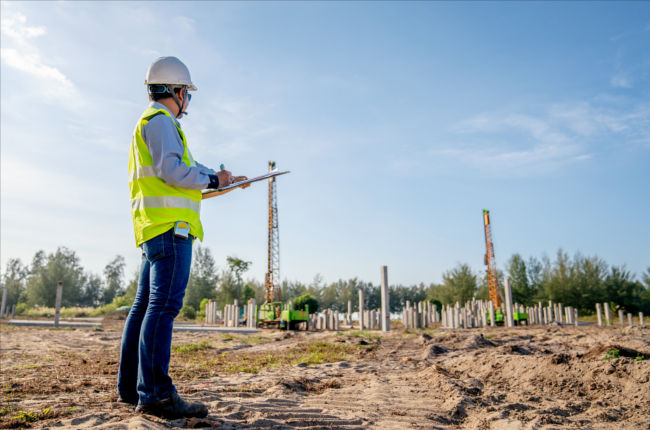Choosing the Right Consulting Engineer for Your Complex Engineering Project
Wiki Article
The Interdisciplinary Approaches in the Geotechnical Market: Bridging the Gap Between Design, Geology, and Environmental Scientific Research for Optimal Project End Results
The assimilation of design, geology, and environmental science within the geotechnical sector is not simply beneficial; it is important for attaining optimal task results. This interdisciplinary collaboration promotes a comprehensive understanding of facility website conditions, enabling for ingenious solutions to arise. By checking out key roles and effective study, we can discover the vibrant interplay that drives task success. Nevertheless, challenges continue to be in effectively managing these multidisciplinary efforts, questioning regarding future trends and potential advancements. What approaches might emerge to promote this essential partnership and boost the efficacy of geotechnical techniques?Value of Interdisciplinary Cooperation
The importance of interdisciplinary cooperation in the geotechnical industry can not be overstated. Effective geotechnical tasks require the combination of diverse expertise from various fields, including design, geology, and ecological scientific research. This cooperation guarantees that all facets of a task are taken into consideration, leading to comprehensive services that attend to complicated difficulties.Interdisciplinary cooperation fosters advancement by making it possible for specialists to share understandings and techniques that might not appear when operating in seclusion (engineer of record). By leveraging the staminas of numerous self-controls, teams can recognize possible risks, optimize layout processes, and enhance the sustainability of geotechnical tasks. Additionally, such partnership promotes an all natural understanding of site-specific problems, which is important for precise assessment and decision-making.
The complexity of geotechnical jobs demands a collaborated strategy to analytic. When designers, rock hounds, and ecological scientists interact, they can develop a cohesive approach that aligns technological needs with ecological factors to consider and regulatory conformity. This harmony not just boosts job end results but also adds to the long-lasting resilience of infrastructure. Eventually, interdisciplinary cooperation is important for progressing finest techniques and achieving excellence in the geotechnical industry.
Key Roles of Each Self-control
Cooperation amongst numerous techniques is not simply useful; it is crucial for the effective execution of geotechnical projects. Each self-control-- engineering, geology, and environmental science-- plays a distinct yet interconnected function that adds to predict efficiency and sustainability.Geotechnical designers are mainly responsible for developing foundations and ensuring architectural stability. They analyze soil and rock buildings to analyze load-bearing capacities, supplying crucial information for risk-free construction techniques. Their competence allows the formula of innovative remedies to complicated challenges.

Ecological scientists assess the possible effects of building on communities and water resources. They perform environmental assessments and develop reduction methods to reduce adverse effects. By integrating ecological considerations, they make certain conformity with guidelines and promote sustainability throughout the task lifecycle.
Situation Researches of Successful Integration
Effective integration of geotechnical techniques can be exemplified with various study that highlight the performance of team effort in dealing with complex design challenges. One notable example is the building of the Hong Kong-- Zhuhai-- Macau Bridge, where a collaborative strategy involving geotechnical design, geology, and environmental science was essential. Rock hounds and designers operated in unison to examine the seabed problems and optimize the structure design, making certain stability and lessening ecological impact.One more impactful case is the enhancement of incline stability in the San Francisco Bay Area, where an interdisciplinary group incorporated geotechnical analysis with environmental assessments. By integrating hydrological studies and geological surveys, the group efficiently determined possible landslide risks and executed reliable reduction measures, enhancing security and sustainability.
Moreover, the redevelopment of Brownfield sites typically calls for a multidisciplinary approach. In one case in Chicago, partnership amongst geotechnical designers, ecological researchers, and city coordinators caused the effective removal of infected dirt, permitting the risk-free change of the site into an area park. These study illustrate that interdisciplinary collaboration not only addresses technical difficulties yet additionally cultivates cutting-edge options that profit both tasks and neighborhoods.
Difficulties in Multidisciplinary Projects

Moreover, working with schedules and operations amongst different teams can be bothersome, particularly when each self-control has special project landmarks and deliverables. This misalignment can result in hold-ups and raised expenses. The challenge of source allotment additionally looms big; making sure that specific proficiency is available at critical junctures calls for cautious planning and foresight.
Finally, governing compliance postures one more substantial difficulty. Each discipline may encounter different regulatory frameworks, and straightening these demands to fulfill job purposes can be complex and taxing. Addressing these difficulties requires solid leadership and reliable communication methods to foster partnership and make certain that multidisciplinary groups work cohesively in the direction of shared objectives.
Future Trends in Geotechnical Practices
As the geotechnical industry progresses, emerging patterns are improving techniques to deal with the difficulties dealt with in multidisciplinary tasks - tailings engineer. One substantial trend is the enhanced assimilation of sophisticated technologies, such as synthetic knowledge and artificial intelligence, right into geotechnical evaluation and design. These modern technologies improve predictive modeling and threat assessment, enabling engineers to make even more informed decisions throughout the job lifecycle
Additionally, the fostering of electronic doubles and real-time surveillance systems is becoming much more common. These devices promote recurring analysis of soil conditions and structural performance, enabling prompt interventions when problems develop.
Final Thought
In final thought, the integration of design, geology, and environmental scientific research is crucial for accomplishing optimum end results in the geotechnical market. Successful instance research studies show the advantages of this method, while recognizing the difficulties faced in multidisciplinary tasks.The combination of engineering, geology, and ecological scientific research within the geotechnical industry is not just useful; it is critical for achieving optimum project end results. Effective geotechnical tasks call for the combination of varied know-how from various areas, including design, geology, and environmental scientific research.Navigating the intricacies of multidisciplinary projects in the geotechnical sector provides several considerable obstacles.As the geotechnical market advances, emerging fads are reshaping methods to address the difficulties encountered in multidisciplinary projects. Geotechnical designers are increasingly teaming up with environmental scientists to guarantee that projects line up with sustainability objectives and comply with regulative needs.
Report this wiki page